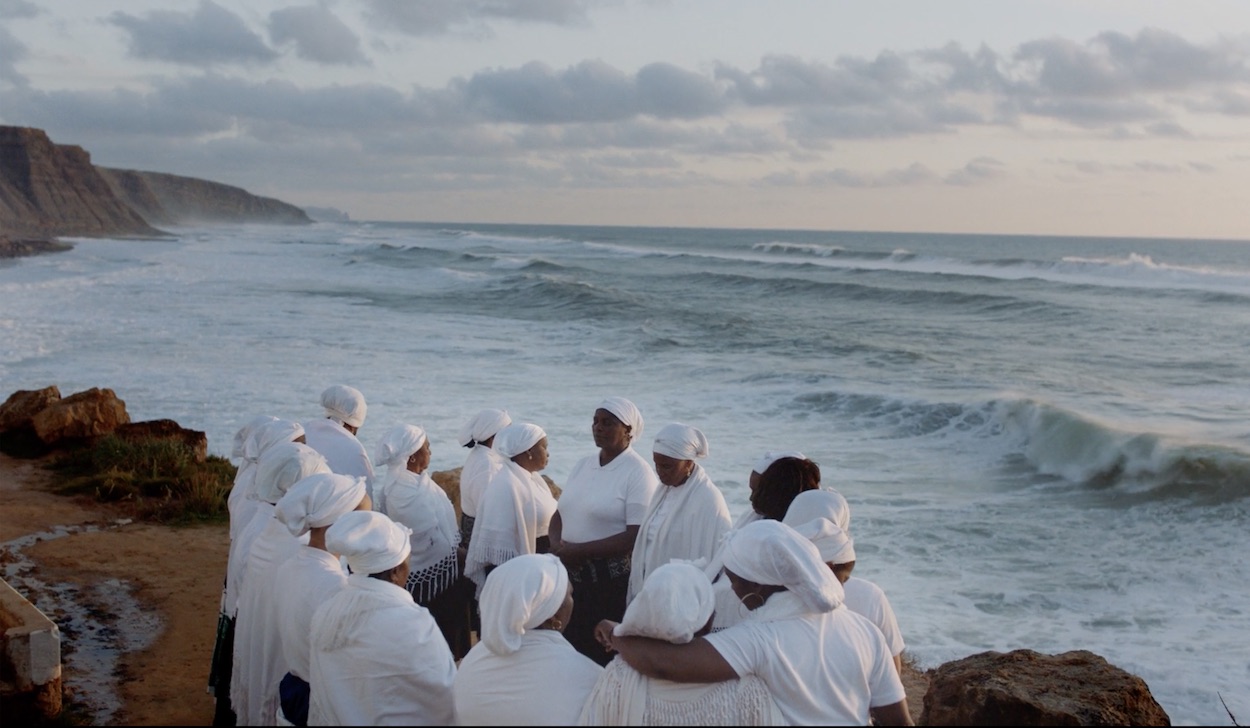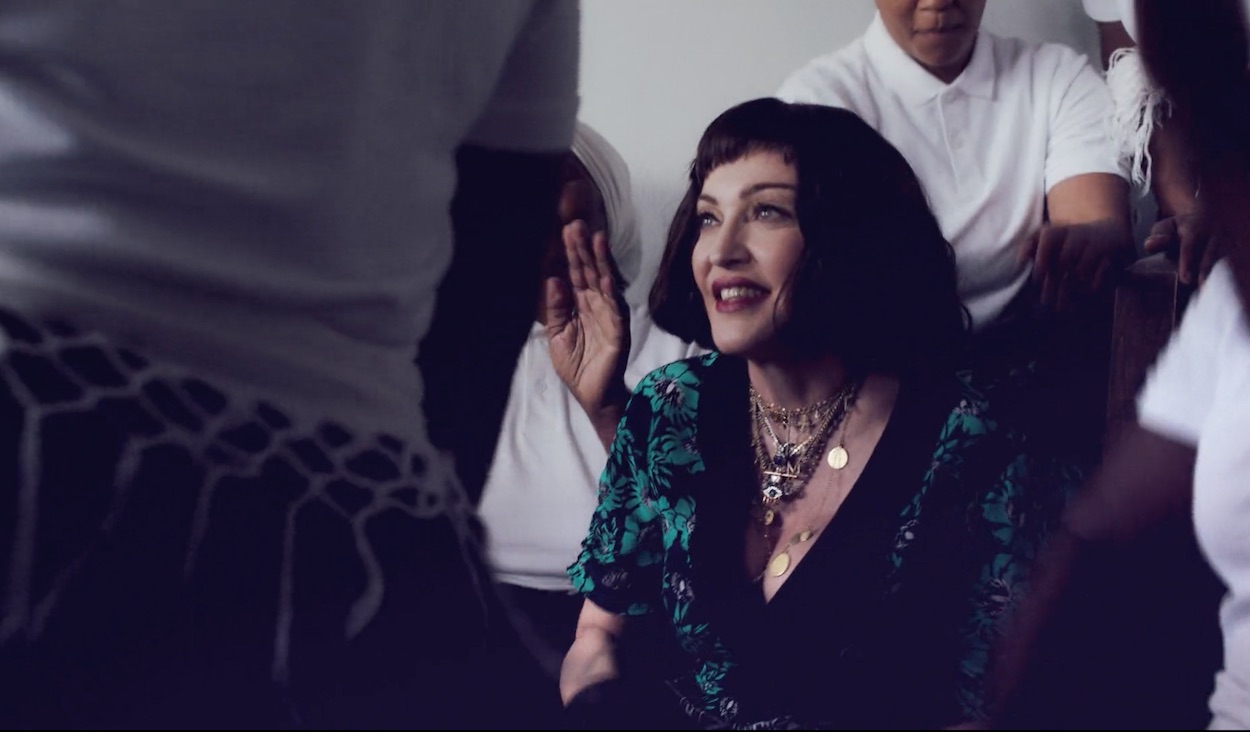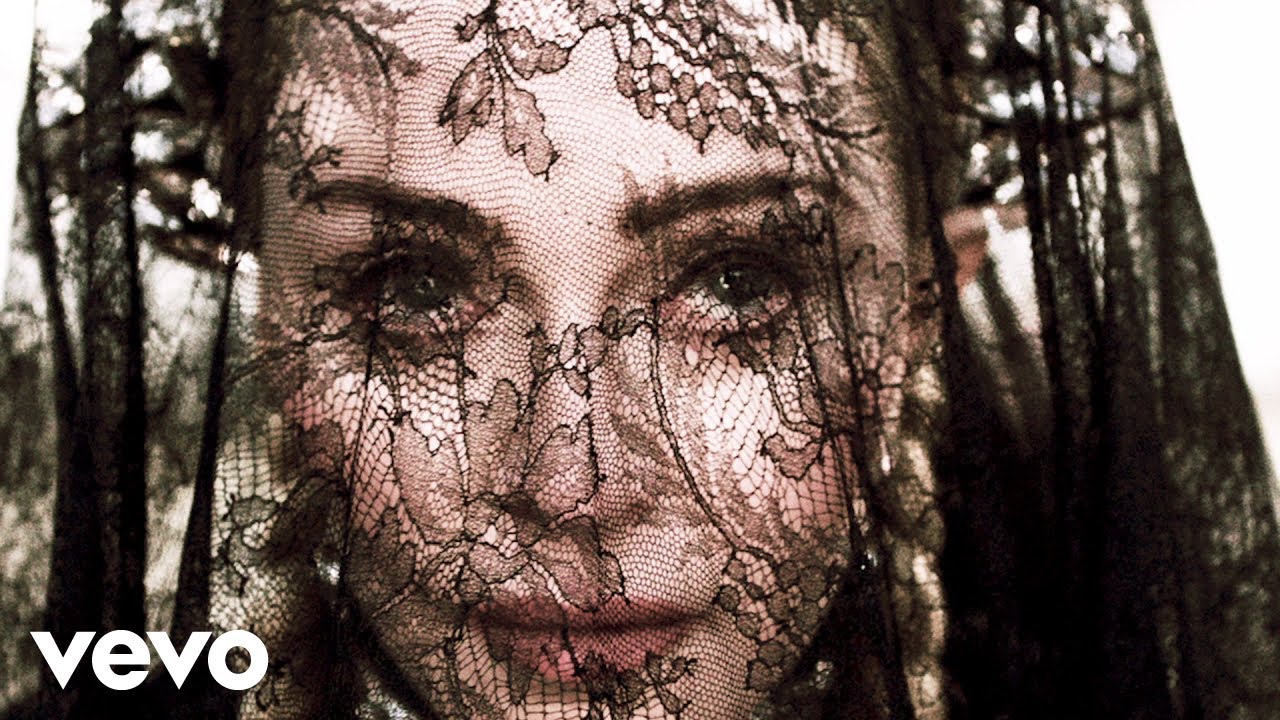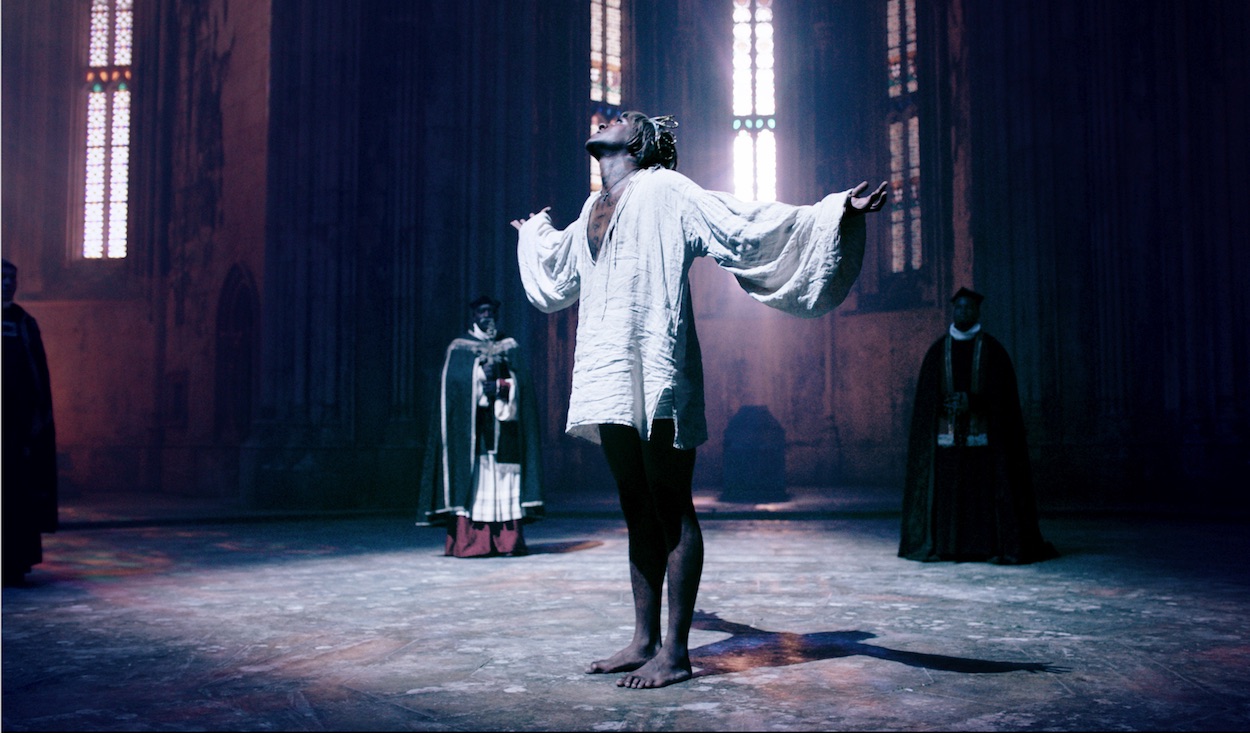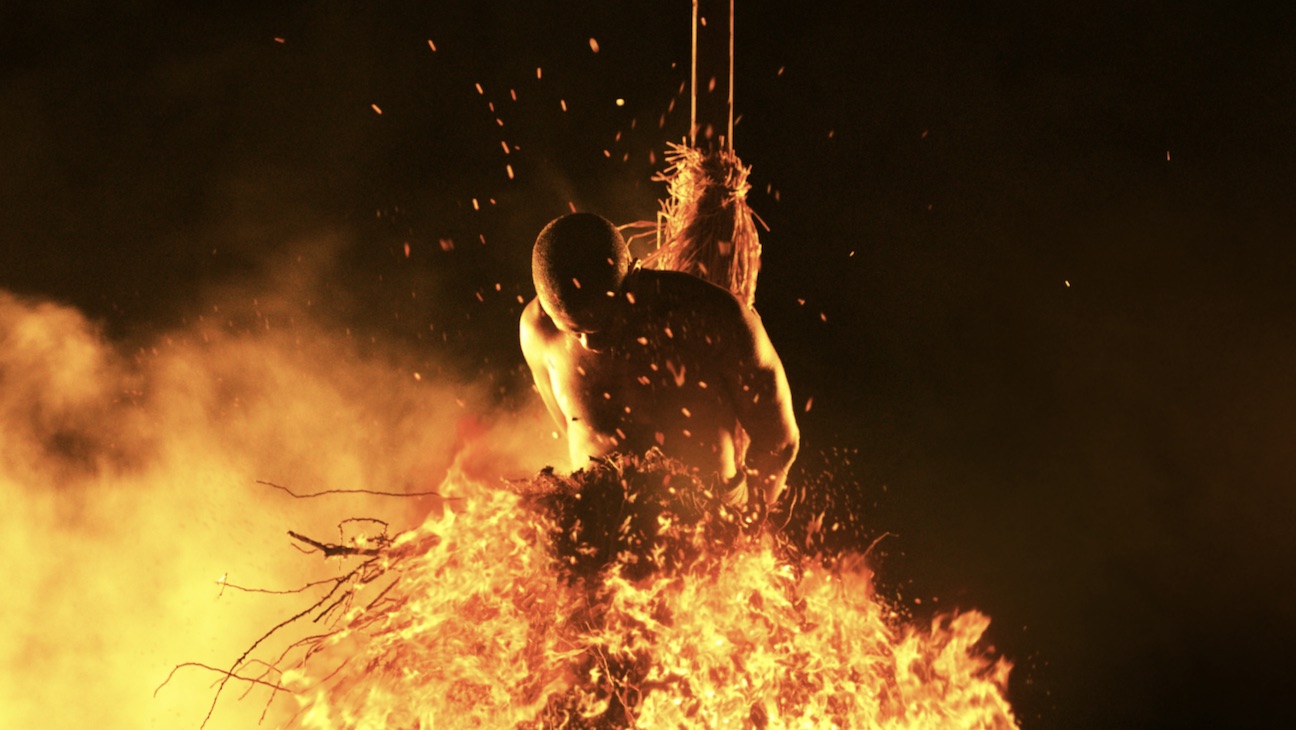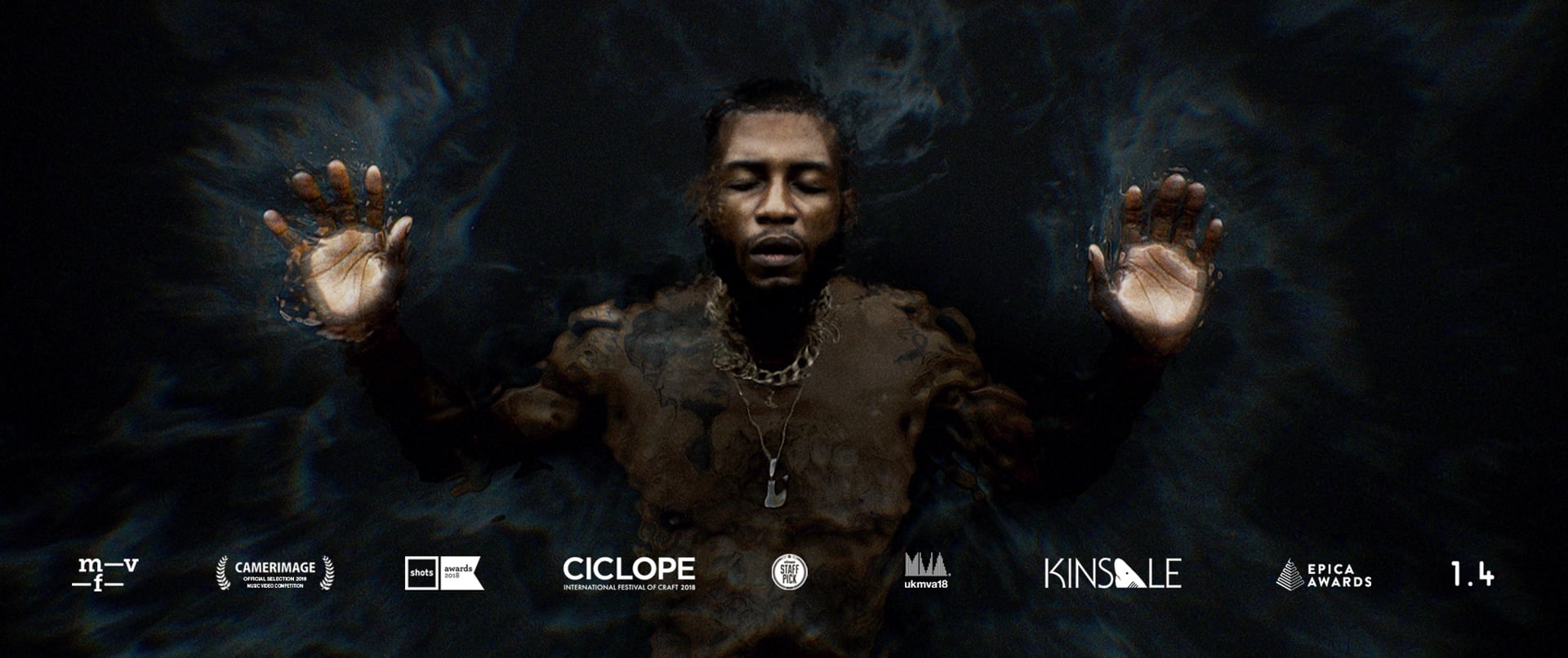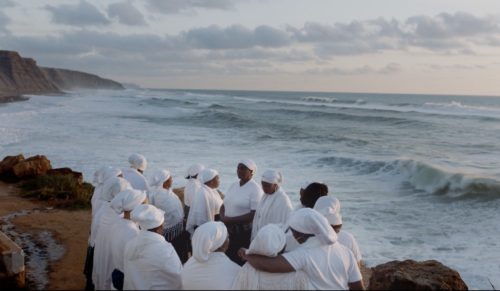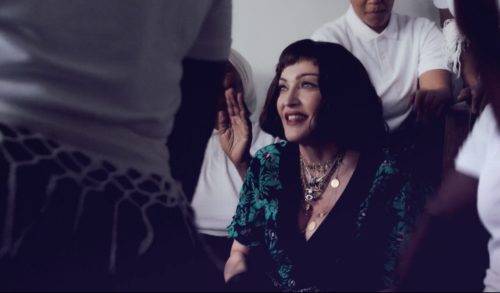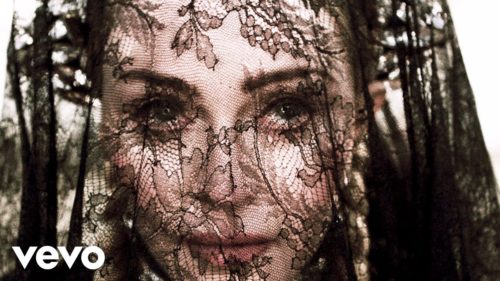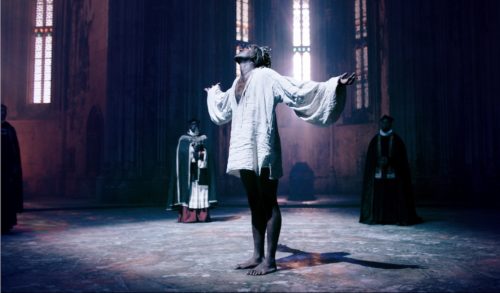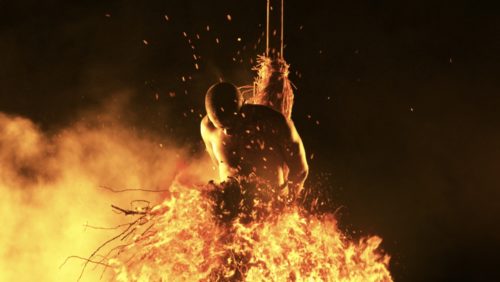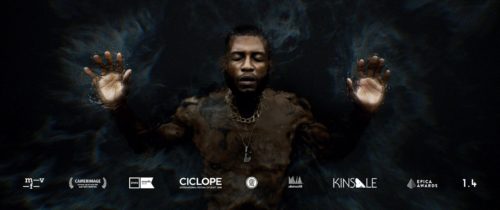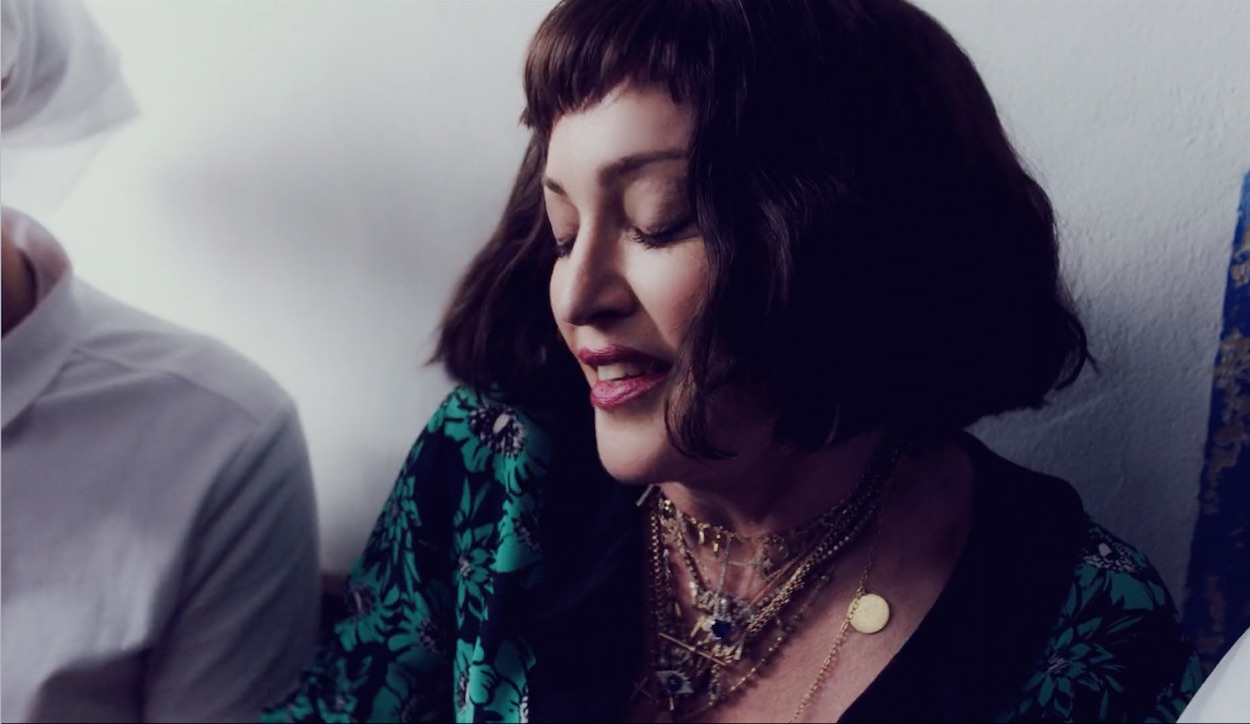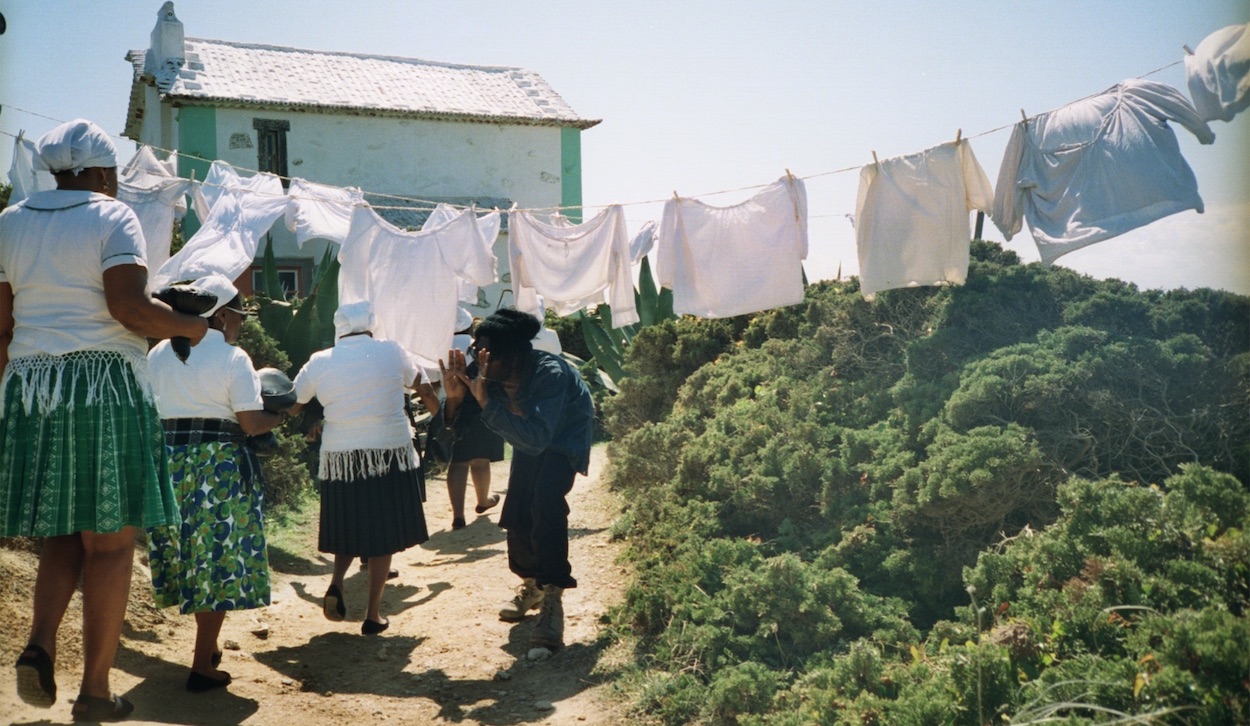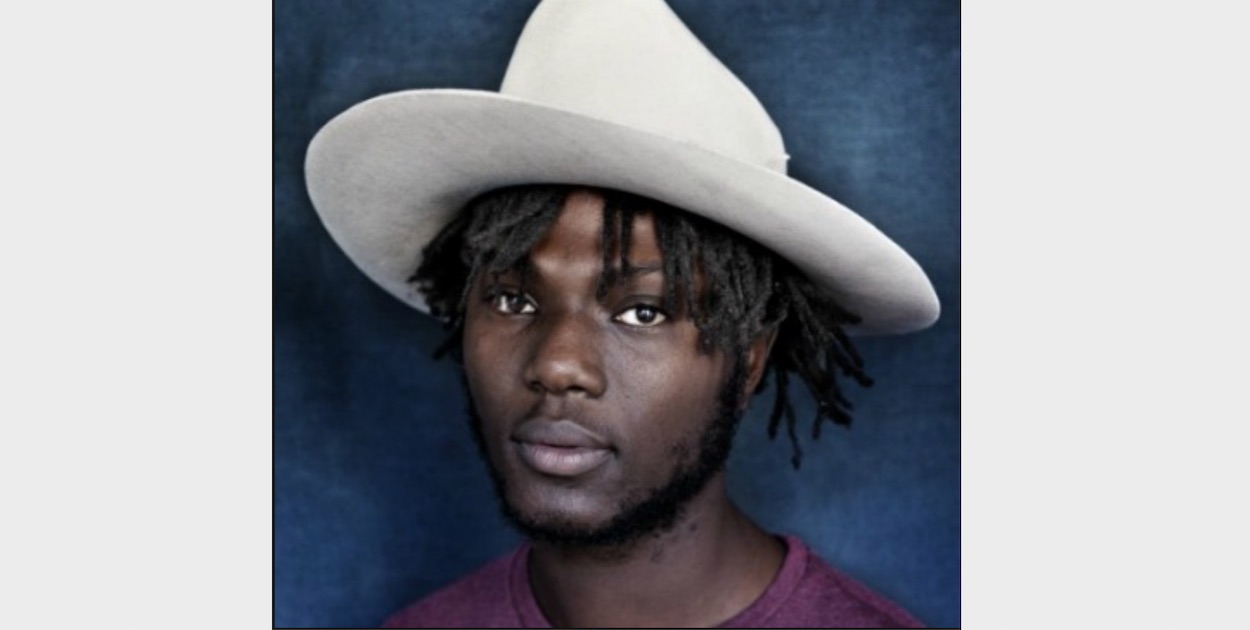Please tell us about how the two, so very different videos, came about. What were the initial briefs and did it come from Madonna? What were the early conversations about?
Madonna’s team reached out at the end of last year asking if I would be able to come over and meet her to discuss the visuals for her upcoming album. She was a big admirer of my work and wanted to collaborate on a number of videos. She organized a private listening session at her place in London and two weeks later I went over there to meet her. This was the first time I met her in person. During our first conversation she gave insight into the backstory of the album and the things that inspired her. We connected on a personal level before we even started talking about the practical side of the videos which was really great.
After a long chat, we went straight into the studio and listened to all the tracks of the album. The songs were all exquisite, so different from her previous records yet very distinctively Madonna. While listening to the tracks we started sharing some ideas. I remember one of them was that she wanted the artist Mykki Blanco to star in one of her videos, as she had a special relationship with him. Initially, she wanted me to direct all the music videos that were scheduled for the album but we ended up choosing three tracks that I resonated the most with so I could really focus on creating strong pieces.
Once I got back to Amsterdam it all kind of felt a bit surreal at first. The next few days after our meeting I went back to Madonna’s place to re-listen to the tracks. After digesting all the info properly and I sat down with my co-writer Marleen Özgür and we wrote the concepts for ‘Dark Ballet’, ‘Batuka’ and ‘Killers Who Are Partying’. For the last track we ended up not shooting a video because of the tight schedule we had, but we had quite some time to develop the concepts for the other two projects which was really great to have.
What was the WHOLE process like? The films are distinctively YOU but did Madonna have her say along all the filmmaking stages through to edit? Did you feel you had to compromise your own vision at all?
The process was fun but also very challenging. We negotiated a lot, as she was really on top of everything. I would literally discuss every detail with her over the phone, by text or in person; from script to shoot to edit, until the day of the release. She had a strong opinion about a lot of things but she also knew what she wanted. In essence, being flexible is key when working with such big artists. I always tried to stay open-minded to new ideas while still trying to keep the very core intact. In the end, I’m really happy our distinct voices and decisions came out nicely in both videos.
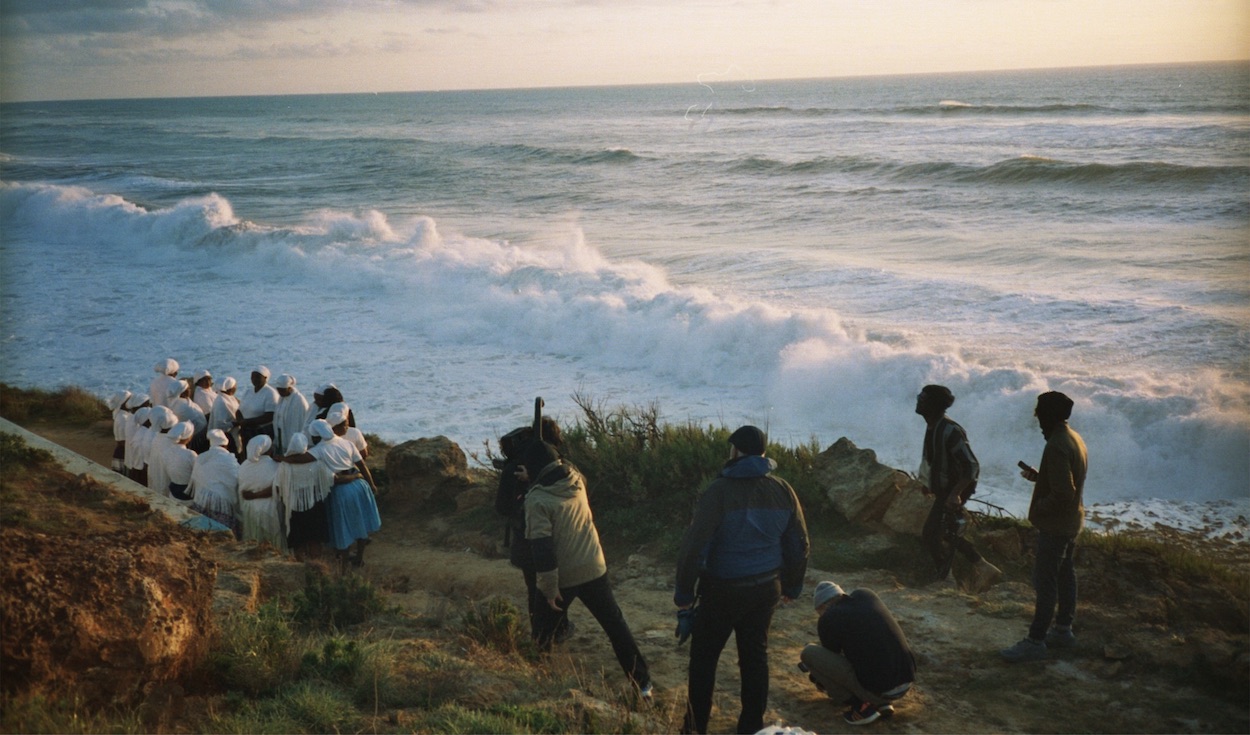 Batuka, on location in Portugal
Batuka, on location in Portugal
Batuka is beautiful in its framing and lighting – did you work with the same cinematographer for both films?
Yes, the director of photography was Paul Özgür, with whom I also worked on Sevdaliza’s Shahmaran. We go way back and have worked on a lot of projects together. He really knows how to capture real emotion through his unique lens. We also had a second unit that came with Madonna’s team shooting additional stuff.
Did you storyboard in detail the scenarios – I guess Batuka was a more spontaneous shots list but how on earth did you work out Dark Ballet?
For Dark Ballet we had to storyboard the whole video in detail as it felt more like a short film. We had a number of different set-ups and a few shots that had visual effects. When storyboarding Batuka, I realized it wasn’t really necessary. I knew I wanted the scenes to feel more organic, documenting real moments of Madonna and the Batukadeiras, so we chose to improvise most of the scenes on the shooting days while still having the main concept as our guideline. Everything still felt in place when we made sudden changes on set.
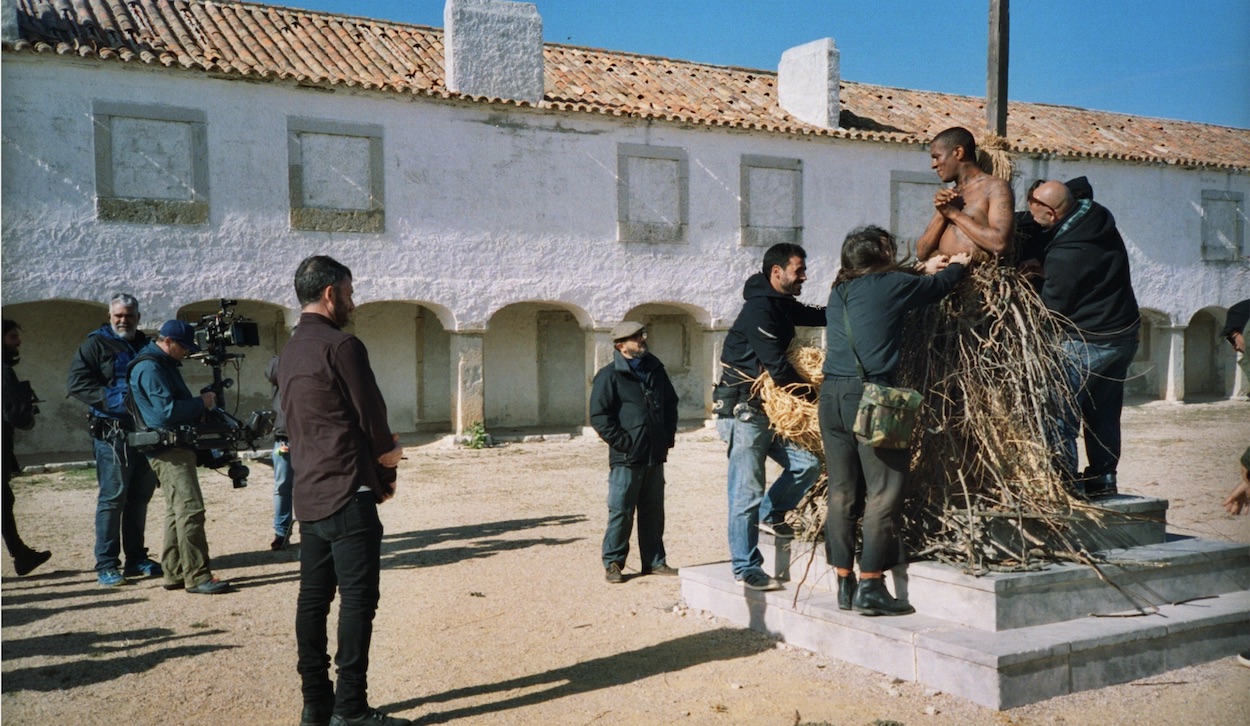 Dark Ballet, Mykki Blanco as Joan of Arc
Dark Ballet, Mykki Blanco as Joan of Arc
What were the most challenging aspects of the productions and how did you resolve them?
One of the main challenges was that we had to shoot two videos that were very different from each other, back to back with a super tight shooting schedule. We basically shot two films at the same time which made it sometimes hard to focus on one. When we were shooting Dark Ballet I was trying to find possible solutions for Batuka. And vice versa. Plus, let’s not forget working with a superstar who is used to having high demands. Executive producers Chris Toumazou from COMPULSORY and Mélodie Saba from Dreamers, together with producer Tom Birmingham, did an outstanding job guiding the productions into the right direction, from beginning till end.
Another thing; looking for some of the locations for Dark Ballet was quite challenging because we wanted to shoot some intense scenes inside or close to a monumental Catholic church building for an artist named Madonna. This is not something you would normally do in a country like Portugal but luckily we had an amazing line-producer Margarida Adónis from Ready To Shoot who did a great job hustling these unique locations for us that we ended up shooting on.
You’re Ghanian and Dutch. A Filmmaker and Artist. What drives you to make films? What is it that you feel is at the core of what you want to express.
My work mostly deals with human narratives that are honest and infused with a sense of mystery, but at its core, I like to see my work as a collection, or rather a curation of my own memories. My mind is like a museum in which I’m choosing very specific thoughts, images and sounds to display. A space of collections that come from my personal, socio-economical and cultural background, and raises political questions, as well as creating a platform for artistic discourse. Being both the curator of all these influences, as well as being a filmmaker and artist, I’m very much aware of the creative process, which I always try to utilize to my advantage.
Please sum up your childhood, was it a particularly creative environment?
My parents are both Ghanaian and I was born and raised in the Netherlands. I grew up in the Bijlmer district in Amsterdam, a place that had one of the highest concentration of immigrants in Europe. A powerful place but also an intense place to grow up as it was neglected for decades by the local government which resulted in social segregation. The Bijlmer created its own raw, unique culture, and like many generations, I developed a mechanism to find my own positive destination. At high school, I first got introduced to fine art and theatre, which was really an eye-opener for me. I have always been fascinated with the Dutch masters, so when I attended art school, the first two years I thought I was going to try and be a painter. I finally ended up making experimental films and got into film school which combined the best of both worlds together in one practice.
And briefly what led you to where you are now!?
It’s really a combination of hard work, collaborating with likeminded spirits and not being afraid to challenge myself. A pinch of good fortune was very helpful every now and then.
Is there anything else you’d like to share?
I want to give special thanks to every member of the team who worked on these two projects. It’s great sharing the fruits of our labour together!
